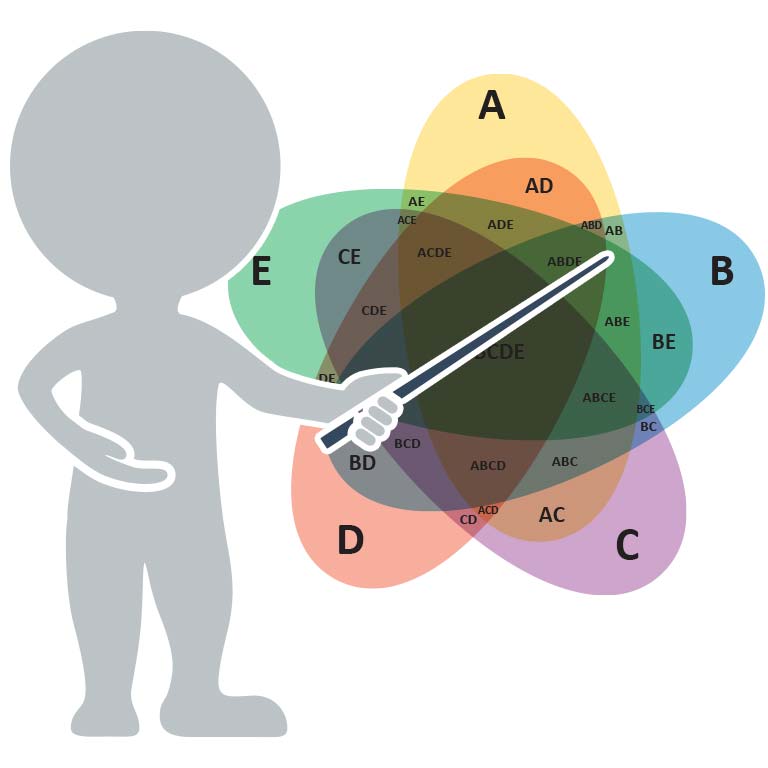The final installment in this series will outline how orchestras can adopt and develop their own docent program similar to the Denver Zoo system. In Part 1 I detailed the similarities between zoos and orchestras and Part 2 provided a comprehensive look at what motivated individuals to become a volunteer docent as well as how the three major stakeholders in that organization perceive the impact of the program on the zoo’s success.
In order to see just how much a docent program can benefit an orchestra, I’ll outline individual problems and then demonstrate how the docent program can contribute to a solution.
Problem 1: Orchestras have become disconnected from their communities and as a result are suffering a rapidly diminishing audience base.
For decades, orchestras have continued to market their product toward a very specific segment of society. According to the Knight Foundation Music is Magic study, this segment comprises about 4% of most communities. You can see the evidence of this statistic in most orchestra’s marketing campaigns; they are targeted at upper class, educated, white people. Even when orchestras attempt to market their product to the diverse demographic that is middle class America, it often comes off looking like a tragically unhip old guy trying his best to look young and cool.
Most first-timer education programs offered by orchestras are nothing more than reams of printed information that’s usually available on the internet. But regardless of how good any of this material is, the percentage of population that will take it upon themselves to go digging for this information and then learn to process it on their own is miniscule. They need to have face to face interaction with a live person in the concert hall that can help them make sense of all that classical music has to offer.
The zoo docent program attracts a very diverse group of individuals who only have one common tie: their love for the the zoo’s mission and what it offers the community. This provides the zoo with an inherent distribution system to a wide range of local communities for zoo programs and special events.
Tie this in with a program like classical.meetup.com and you can easily generate an ongoing cultural social event that becomes a word of mouth success. By successfully reaching out to such a diverse group throughout a community, orchestras will not have to suffer from the need to reinvent its public image; because the public image will already mirror the community.
Problem 2: Most people feel that they are not capable of understanding classical music and orchestras have not been doing anything to dispel that myth.
This is perhaps the most significant of problems facing orchestras today. You can blame the reduction of music education in public schools, but in the end orchestras have to realize that it’s up to them to teach people how to love classical music and the concert going experience. Simply expecting them to show up because it is classical music will no longer work.
With the stigmata of elitism that is already attached to classical music among the general population, this problem becomes twice as severe. To compound the situation even further, orchestras have never done much to help those first time patrons really feel welcome in the concert hall. They do provide program notes (which themselves, need a music dictionary to understand) and maybe a preconcert lecture from time to time but not much else.
But when you take a trip to the Denver Zoo you find a docent at nearly every exhibit and even some that just roam throughout the zoo looking for people to help and talk to. They are part of the zoo’s “ask me” program and they share information about exhibits and relate personal experiences that all work toward creating a personal connection with the visitor. Sure visitors can read the signs, but it has much the same effect that reading program notes has on orchestra patrons.
When you meet a docent you immediately get the feeling that they are much like you, but they can tell you about what makes an animal or exhibit interesting. It’s like having a custom designed edition of Animal Planet at your disposal. Some of what you talk about is facts and figures; some of it is simply their personal observations with that particular animal. They don’t always know the answers but that, in and of itself, is also what creates another common bond – they are people just like you that don’t have all the answers.
But learning that there are people out there just like you who easily learned to better understand ecology, animals, conservation, and the environment makes the zoo a much more inclusive attraction. You begin to develop your own personal connection to the product through a personal connection from someone else. It’s sharing a story and creating a safe, comfortable environment that stresses the importance of learning and appreciating without demanding conformity.
Orchestras can easily develop the same situation in their concert halls with a friendly, enthusiastic group of orchestra docents that want to do nothing more than help others understand what they’ve come to personalize and appreciate in their own particular way.
Given the smaller size of concert halls compared to the area of a zoo, it is easier to connect with a greater number of patrons in the shorter amount of time that is spent not listening to the music, such as before and after concerts as well as during intermissions.
What the potential audience of tomorrow needs is to become confident with their ability to process and critique what they listen to without any fear that they’re “doing it wrong”. Docents will provide an invaluable service with helping new patrons and offering reassurance that they have a valid opinion about the art form. Learning to appreciate and enjoy classical music is easy, much easier than classical music outsiders often realize – they just need someone to help them get started.
Problem 3: Orchestras are spending more and more on marketing initiatives to attract a new audience. In turn, they have created a financially unsustainable marketing-expenditure to ticket-price ratio.
Picture this scenario: you need to attract a larger audience, so you spend more money on advertising. In turn, the cost of that advertising is squeezing your already inadequate ticket revenue. So you have to raise the price of the ticket to cover the cost of the advertising. This in turn reduces the number of people attending the concerts, so you spend more on marketing to bring in a new audience, and so on and so forth. In the end, what you end up with is 50% of the face value of each ticket sold going toward what it cost to market it in the first place.
This condition is only sustainable up to the point where the tickets are priced so high that no amount of marketing will attract enough patrons willing to shell out the cost for the ticket. What an orchestra needs is a low cost method of advertisement that can reach a diverse, targeted audience.
When the orchestra goes on a run out to their local suburbia, they typically have two choices when it comes to drawing an audience, they can put big money into shotgun advertisement that just happens to also fall in their target community or they can print expensive one time use promotion material to distribute throughout the concert location. Wouldn’t it be nice if they had 30 docents already living in that community with the needed connections and contacts to help bring in 40% of the needed audience?
A docent program certainly won’t replace advertisement, but it can certainly help reduce the overall cost by at least 25%. Not only will docents help promote the actual concerts; they can contribute by writing marketing material that would otherwise be written by a paid member of the marketing department or a contracted marketing firm.
If the docent program is large enough you can feasibly have so many volunteers writing good material that you really only need to pay for an editor. I’ve seen some of the marketing copy some docents can produce and it is absolutely first rate material, much better than what I see in the newspaper and online from orchestras already.
Problem 4: Orchestras continue to utilize a 19th century model of operation. They rely primarily on government and philanthropic financial support in conjunction with large donors to financially sustain their operations.
It’s no secret that orchestras are not supported by small and mid level patron support. They sustain their operations on big donors writing big checks every so often and any type of government and philanthropic support they can gather up. This is representative of the type of audience orchestras have traditionally courted; rich white guys. Even the volunteer organizations that most orchestras maintain are really nothing more than check writing social clubs.
If they raise a great deal of money they may just get to shake hands with the music director or attend a luncheon in the boardroom. They don’t have a fraction of exposure and access to the organization which the Denver Zoo provides the docents.
And it’s that mentality among orchestras that will be the most difficult to modify. For whatever reason orchestras are secretive, reclusive institutions. Public relations officers and marketing directors intensely dislike not being able to micromanage the information related to their organization.
Giving up a noticeable share of that control to someone else, volunteers for that matter, is going to take a mental “about face” for many professionals in this business. And having 100-300 or so trained docents running around as the principal face of the organization will take a great deal of willingness on the part of those information professionals.
Another positive side effect from a significant amount of direct contact between orchestra docents and patrons is an exponential increase in the amount of individual giving. Once patrons have become comfortable with classical music and the docents are regularly verbalizing the orchestra’s mission, people will want to give money to support the organization.
They will begin to see how important the orchestra really is to the community and they will show it in the form of donations. With docents having much closer access to the internal operations of the orchestra, the administration will need to become significantly more responsible with how they spend that money than most currently are.
Conclusions
Establishing an orchestra docent program is a simple, smart, and effective idea that will begin to solve many of the immediate problems facing today’s orchestras. The program will also contribute to stepping up several other necessary changes in the way orchestras function internally as well as how they relate to their communities.
Creating a successful program will require that the orchestras acknowledge just how far removed they have become from the American cultural consciousness and that they need direct support from their local communities. They will need to learn from the lessons at the Denver Zoo and allow the volunteer docents to retain control over their program. I fear this could be a deal breaker for many organizations given the historical level of control most orchestras demand. They will need to facilitate giving them the knowledge and tools they need to help make public the orchestra’s mission.
The particulars of a program will require input and participation from the orchestra’s musicians, section leaders, and the music director. Without their continuous support and involvement, the program will come across as nothing more than another propaganda tool that orchestras are already well known for.


